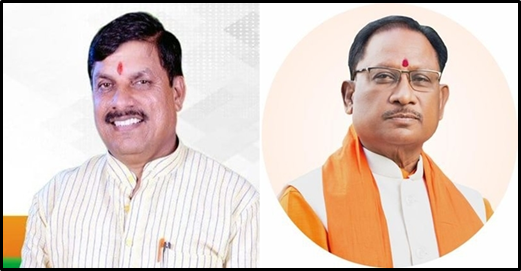Mohan Yadav as CM of MP and Vishnu Dev Sai as Chhattisgarh CM
News
- Today in Bhopal, senior BJP leader Mohan Yadav will take the oath of office as the chief minister of Madhya Pradesh.
- The ceremony will also feature Prime Minister Narendra Modi, Chief Ministers of several states, National President JP Nadda, Union Ministers Rajnath Singh and Nitin Gadkari, and other party officials.
|
Chief Minister Who is eligible to hold the position of Chief Minister? ● The party or coalition group that wins a majority in this House following the general election selects its leader and notifies the governor of his choice. After that, the Governor asks him to form his Council of Ministers and formally appoints him as the Chief Minister. ● The Governor typically asks the leader of the single largest party to form government when no party wins a clear majority in the State Legislative Assembly. Tenure of CM: ● The Chief Minister is supposed to serve as long as the Governor pleases. In reality, though, the Chief Minister holds his position for as long as he leads the majority in the State Legislative Assembly. ● If he/she loses his majority support, the Governor has the authority to fire him. ● He may also be dismissed by the State Legislative Assembly if a vote of no confidence is taken against him. The Chief Minister’s authorities and duties: ● To support and counsel the governor. ● Leads the Council of Ministers. ● He serves as the House Leader. ● He is responsible for informing the governor of every decision made by the council of ministers regarding state governance. ● He announces all of the policies on the house floor. ● He suggests to the governor dissolving the legislative assembly. ● He counsels the Governor on calling and occasionally postponing the State Legislative Assembly sessions. Note: ★ PART VI of the Constitution addresses the States, the other half of Indian federalism. An article from 152-237 addresses a number of state-related provisions. It encompasses the state legislature, executive branch, and judicial branch. ★ Articles 163–164 address the state Council of Ministers and appointment provisions. ★ Federalism: A system of government known as federalism divides authority between two or more tiers, such as the national government and the states or provinces. Within a broader political unit, federalism makes it possible to accommodate diversity and regional autonomy. |




